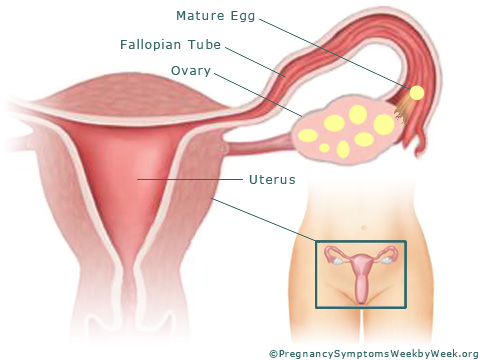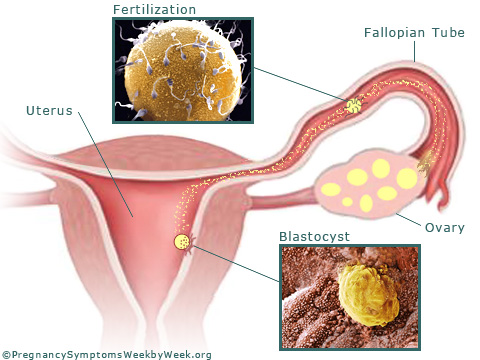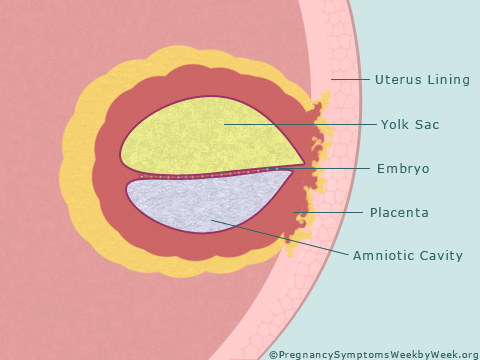Conception ─ Early Pregnancy Signs and Symptoms
Pregnancy begins with conception, a process that starts with an egg being released from an ovary followed by fertilization by a sperm that meets the egg in the fallopian tube, and completing with the fertilized egg implanting in the uterus.
An Egg is Released

At birth, every woman is born with her full quantity of follicles, within her ovaries, which contain undeveloped eggs. Each month, follicle stimulating hormone (FSH) is released from the pituitary gland which encourages a number of the follicles to begin developing mature eggs. Active follicles produce the hormone estrogen. The rising levels of estrogen trigger the uterus to thicken its walls in anticipation of the implantation of a fertilized egg. As the volume of estrogen rises in the body, the pituitary gland is signaled to create luteinizing hormone (LH). This surge in LH stimulates one follicle (and in some cases more than one) to release a mature egg. This is the moment of ovulation. Once the egg leaves the follicle and the ovary, it enters the fallopian tube. The egg begins its 5 or more day journey through the fallopian tube to the uterus, during which conception takes place. (The fallopian tubes have tiny fronds that push the egg in the direction of the uterus.)
The Passage of Sperm to the Moment of Conception

At each ejaculation, a man releases around 250 million sperm. The anatomy of a sperm consists of a head (containing genetic material) and a tail used to propel it. The tail enables the sperm to reach the fallopian tube where fertilization occurs. The journey through the vagina, uterus, and up into the fallopian tube can take only a matter of hours. The window of fertilization can be up to 6 days, since sperm can survive in the vagina and uterus for 3-5 days.
One sperm will manage to break through the protective layer of the egg, or zona pellucida, which quickly thickens so that it may be fertilized by only one sperm.
Implantation of the Egg in the Uterus

The egg has grown into a small bundle of cells by the time it reaches the uterus, called a blastocyst. The blastocyst’s attachment to the uterine lining is loose in the beginning, yet it begins to produce enzymes which digest the lining, allowing it to lie snugly beneath the surface of the uterine wall. At this point the sex is decided but the embryo has not developed into a recognizable shape.
Conception Aids
For some, conception can take longer than expected. You may want to see your doctor and have you and your partner’s fertility tested. In vitro fertilization is widely popular in assisting fertilization. With this method, fertility drugs help you produce more mature eggs at a time, which are then harvested by your doctor and fertilized with your partner’s sperm. You are then given a hormone treatment to prepare the uterus for implantation of a fertilized egg. There are also methods where a single sperm is injected into an egg if the sperm quality is poor, or where sperm is directly inserted into the uterus if the sperm is found to have poor motility.

